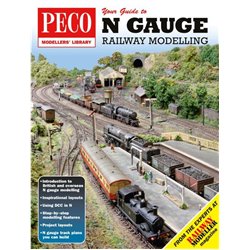Superglue has strong bonding properties but still takes time to cure. Depending on the type of superglue you use, the...
No products
Product successfully added to your shopping cart
There are 0 items in your cart. There is 1 item in your cart.
Search Tips
How long does it take to build a model railway?
Building a model railway is a rewarding but time-consuming hobby, and how long it takes depends on several factors, including the size of the layout, the level of detail you want to achieve, and your personal pace. For a small, simple layout, you might be able to put together the basic structure in a few weekends, but for more complex and detailed designs, the process could easily stretch over months or even years. Many enthusiasts find that it's an ongoing project that evolves continuously, as there's always something to improve or add.
The first stage involves planning the layout. This can take quite a bit of time if you want to get it just right. You'll need to decide on the space available, whether it's a small portable layout or a more permanent fixture like a garden railway or a loft-based system. Planning also includes selecting the right gauge (OO gauge being the most popular in the UK), track configurations, and deciding on a theme – whether it's a modern setting or a nostalgic steam-era scene. This phase can take anywhere from a few days to several weeks, depending on how detailed and accurate you want the design to be.
Once you've got your plan, the next step is building the baseboard, which could take a weekend or more, depending on the size and complexity. After that comes the track laying, which can take a few more days if you're following a simple plan. More intricate layouts with gradients, multiple lines, and sidings will obviously take longer to assemble. At this stage, many enthusiasts test the track extensively to ensure smooth operation before moving on to scenery or electrics.
Wiring and installing electrics can be one of the most time-consuming parts, especially if you're incorporating features like lights or automated signals. Basic analogue wiring for a small layout might take a day or two, but more complex systems can take weeks to wire and troubleshoot properly. If you're new to electrical work, there's a bit of a learning curve, which might slow things down but is ultimately a rewarding aspect of the hobby.
Scenery and detailing are where many hobbyists spend the bulk of their time. From creating realistic landscapes, buildings, and trackside features to painting and weathering, this can take anywhere from weeks to years depending on the level of detail you want to achieve. Many people enjoy this stage so much that it becomes an ongoing process, with new details being added gradually over time.
Overall, how long it takes to build a model railway varies widely. For some, it's a project that can be completed in a few months, while for others, it's a lifelong hobby. The beauty of model railways is that they can always be expanded, improved, and modified, so in many ways, the process is never truly finished.
Click here to receive the tips weekly in your mailbox. You can unsubscribe at any time.










